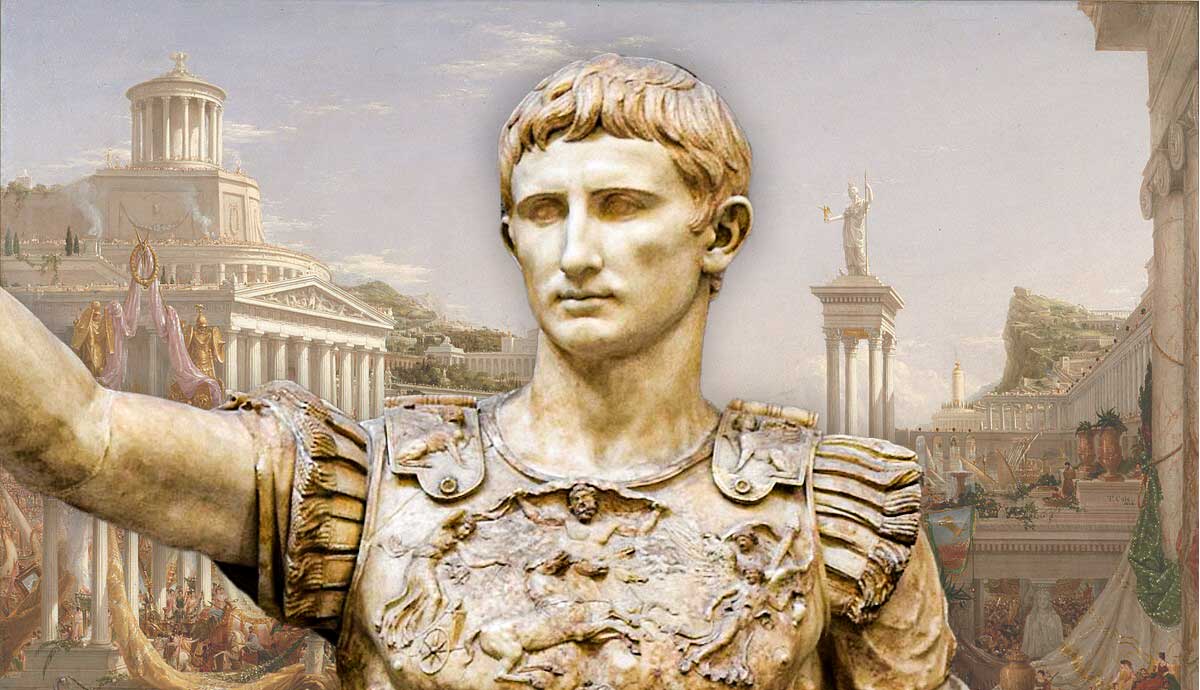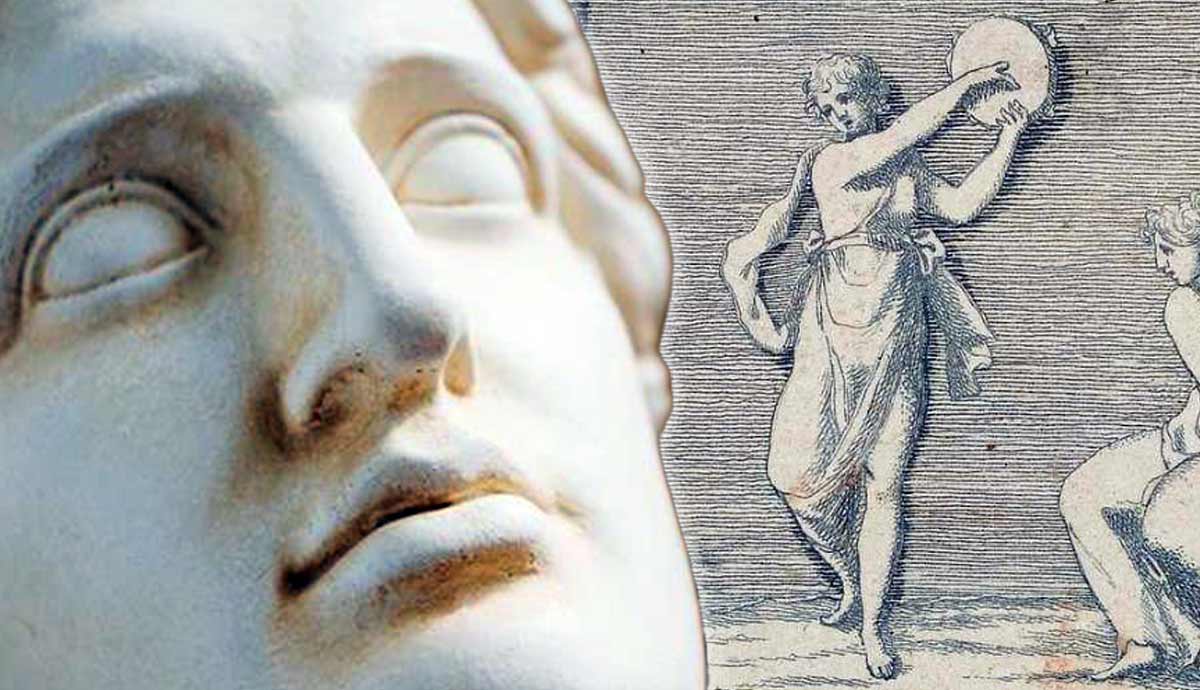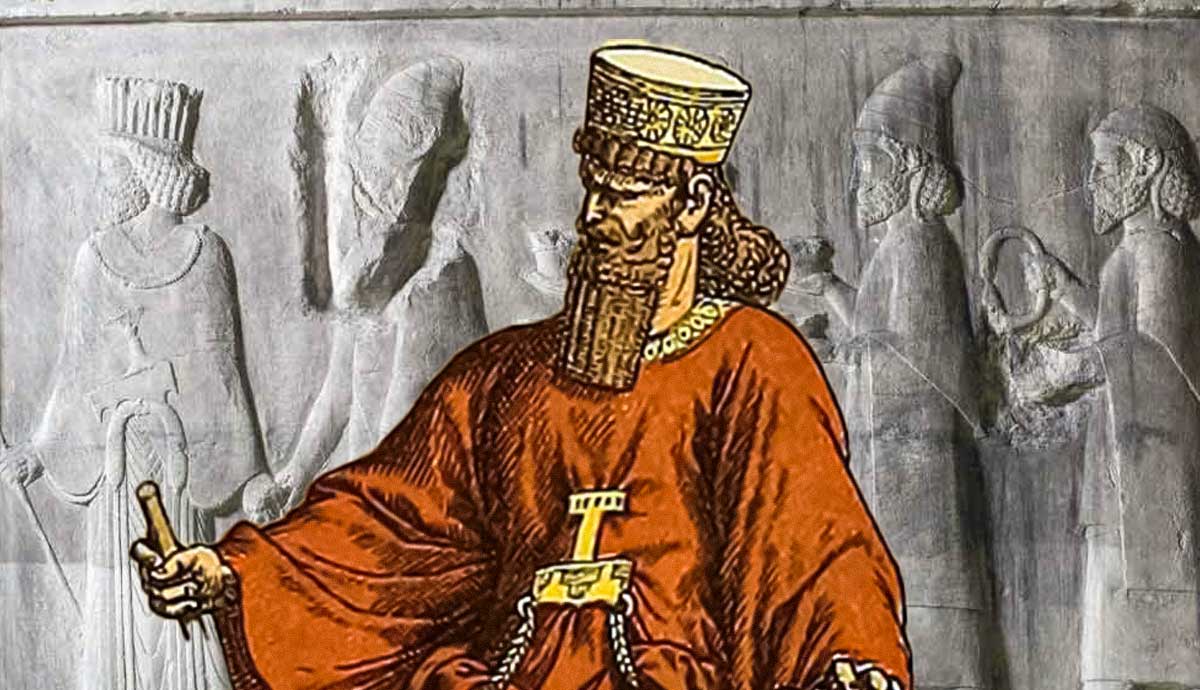
Gaius Suetonius Tranquillus was an ambitious imperial official under the Roman Emperor Hadrian, whose name has come down through history for writing imperial biographies of Rome’s first emperors, called The Twelve Caesars. While his position at court gave him unique access to imperial archives to inform his work, he was not a historian, but rather a biographer, more interested in salacious stories and personal anecdotes than historical facts. As a result, scholars have perennially debated the utility of Suetonius and his work as a historical source, but he is also our only source for some periods of imperial history. Consequently, regardless of tension between historical accuracy and dramatic storytelling, his work has been integral in shaping modern perceptions of imperial Rome.
Birth and Background

Suetonius was likely born in 69 CE, just as the Emperor Vespasian was winning the civil war following Nero’s death and establishing Rome’s second imperial dynasty. His exact birthplace is debated by scholars, with some suggesting Hippo Regius in North Africa, while others argue for an origin somewhere in Italy. He was born into a well-established equestrian family, with a great-grandfather (also called Suetonius) serving as “Tribune of the Plebs” in the Late Republic.
Scanty evidence then suggests his grandfather was in close proximity to court circles during the reigns of some of the Julio-Claudian emperors. We know that his father, Suetonius Laetus, served as a military tribune under the failed emperor Otho and his successors, the Flavians. As such, the famous imperial biographer Suetonius would have been raised in an ambitious and well-connected equestrian household.

From a young age, it seems he was well-educated in rhetoric and literature, allowing him to enter into the world of the Roman literati. At the time, this milieu was dominated by figures such as Quintilian, and later, the imperial administrator and writer Pliny the Younger.
From the letters of Pliny, we are given the impression that Suetonius became one of his proteges and was often advocated for by Pliny, who praised his literary talent. Pliny was also an influential figure under the Emperor Trajan, which allowed Suetonius to be offered certain administrative equestrian posts, including a military tribunate.
However, it seems that Suetonius ultimately rejected this post after some hesitation, although he may have joined Pliny as governing procurator of the province of Bithynia-Pontus in 110 CE. This was to be followed by various other posts under Trajan, including a priestly position and various secretarial roles, before he became “ab epistulis,” or “chief of correspondence,” under Hadrian.
Member of Hadrian’s Court

Hadrian was famous for his administrative reforms, which saw an increased bureaucratisation and centralisation of the state apparatus. This, therefore, placed Suetonius in a very prestigious and influential position, with access to a vast network of intelligence and communication.
The role of ab epistulis itself seems to have been created by Augustus, who set up a comparatively small court (compared to later standards) to help govern the Empire, now that Rome was no longer a Republic and had a single head of state. Given how busy Augustus and his successors were, whether fighting in wars, masquerading as gods, or administrating the Empire, it made sense that there were professional officials who kept track of and helped manage imperial correspondence.
As such, an ab epistulis would draft imperial edicts, reply to petitions, and communicate with officials across the Empire. Whilst all of this communication was supposed to be under the emperor’s oversight, the exact level of imperial involvement varied from emperor to emperor.
Nonetheless, the position put an individual in close proximity and confidence with the emperor and in a position of real influence. Under those emperors who were not very involved in the minutiae of correspondence, whoever was ab epistulis could even be courted and bribed by ambitious aristocrats and officials.
The Twelve Caesars

The Twelve Caesars (De Vita Caesarum) is Suetonius’s famous set of imperial biographies, stretching from Julius Caesar to Domitian. Written during the early second century CE, likely sometime after Suetonius’s dismissal from Hadrian’s court, the work reflects both his insider experience within the imperial administration and the wealth of archival material to which he would have had access.
The lives, or “vitae” of each ruler are ordered chronologically in the Twelve Caesars, but within each one, the accounts are organized around thematic sections, for example, ancestry, early life, public offices, habits, vices, and death, rather than providing a linear account of each reign. This format allowed Suetonius to focus on imperial personalities in a way that was more anecdotal than analytical, concentrating on behavior, character, and private detail much more than public achievement.
Scholars are not certain about the exact date of composition, although it is generally thought that the work was written during Hadrian’s reign, with much of the source material likely gathered while Suetonius was serving as ab epistulis in the imperial bureaucracy. His access to imperial libraries, archives, and perhaps even personal testimonies would have made him uniquely well-placed to compile such an ambitious and detailed set of biographies.
Reception of Suetonius’ Work

From its earliest circulation, The Twelve Caesars appears to have enjoyed considerable popularity. Ancient readers were seemingly drawn to Suetonius’s colorful portraits of Rome’s most powerful figures, especially with its unique blend of imperial gossip, moral observation, and political detail.
The work was widely read, and later biographers, including the authors of the (admittedly dubious) Historia Augusta, drew directly on its content and format. Though few contemporary references to it survive, Suetonius was clearly read quite widely in elite circles, particularly for those interested in the personalities and peculiarities of the emperors.
In the medieval period, his appeal endured, particularly among monastic scholars and clerics who were interested in focusing on Suetonius’ analysis of morals. His biographies were often scrutinized for cautionary tales of pride, cruelty, and excess, particularly if they could be applied to contemporary Christian frameworks that sought to highlight the dangers of earthly power and moral corruption.
Although he was not considered as serious a historian as other ancient writers (such as Tacitus or Sallust), his work was still prized for its clarity and moral vividness. Indeed, the popularity of the text is demonstrated by the fact that it was copied and preserved in numerous manuscripts and continued to circulate across Western Europe for centuries.

During the Renaissance, Suetonius’s stature was enhanced. Humanist scholars, keen to recover classical knowledge and style, turned to him not just as a moralist, but as a witness to the inner machinations of Roman imperial life. Renaissance heavyweights such as Petrarch, Erasmus, and Machiavelli read him alongside Tacitus and Plutarch for their edification.
Suetonius’s relatively straightforward Latin and his attention to both public and private life made him a useful model for contemporary biographers as well. While Tacitus was valued for his historical depth and political analysis, Suetonius offered something more intimate and observational: a glimpse into the habits, scandals, and contradictions of Rome’s rulers.
In modern scholarship, Suetonius occupies a more contested but still essential place. On one hand, he is widely recognized as one of our most important sources for early imperial history, particularly for figures like Caligula, Claudius, and Domitian, especially where other narratives are limited or lost. His proximity to power, as ab epistulis under Hadrian, and his likely access to imperial archives, official documents, and oral traditions give his work a degree of credibility, at least in terms of his sources. For many emperors, Suetonius preserves otherwise unattested details about their lineage, administration, and personal lives.
Dismissed From the Imperial Court

Suetonius appears to have fallen from favor at Hadrian’s court around the same time as several other high-ranking officials. The Historia Augusta, one of our few narrative sources for Hadrian’s reign, briefly notes that Suetonius, along with Hadrian’s praetorian prefect Septicius Clarus, was dismissed for “conducting themselves with Hadrian’s wife in a more informal manner than was considered prudent for the court” (HA, Hadrian: 11.3). Though tantalisingly vague, this phrasing has traditionally been taken to suggest that Suetonius and Clarus were perceived as overfamiliar, perhaps socially or even romantically, with Empress Vibia Sabina.
Whether this accusation reflects reality or courtly intrigue is difficult to determine. As mentioned above, the Historia Augusta is a notoriously unreliable source, often blending fact with fiction and moralising rumor. Still, the episode suggests that Hadrian’s court demanded strict conduct from its inner circle, and that perceived impropriety could be grounds for removal. It is also possible that the dismissal was politically motivated and was part of a wider restructuring of Hadrian’s administration in the early years of his reign.
Whatever the true cause, Suetonius’s dismissal did not mark the end of his literary output. Indeed, it may have allowed him the freedom to continue writing full time, completing the Twelve Caesars and other works no longer extant.
Historical Value of Suetonius’ Twelve Caesars

Despite its popularity and enduring influence, The Twelve Caesars presents modern historians with a number of problems. Perhaps the most notable is its aforementioned structure, organized into thematic categories that create inconsistencies and contradictions for the scholarly reader.
Unlike some of his contemporaries, whose historical narratives were permeated with more overarching themes and interpretations, Suetonius’s fragmented structure often obscures chronology and key things like cause and effect. This method often makes it difficult to track political developments or understand how certain imperial decisions influenced later events.
Moreover, Suetonius is frequently criticized for his uncritical inclusion of gossip, rumor, and salacious detail in Twelve Caesars. Many of his most memorable anecdotes, particularly those involving sexual misconduct or personal cruelty, are presented without clear source evaluation or contextual framing. While these lurid accounts undoubtedly appealed to many contemporary readers, they raise questions of reliability and accuracy for modern historians.
Ironically, however, it is precisely this character-focused approach that also makes the work so valuable and unique. Suetonius captures the moral and cultural expectations of Roman leadership, including what Romans admired, what they feared, and how they judged the powerful.
His biographies offer unique insight into how emperors were remembered, discussed, and morally assessed by contemporaries. Moreover, for emperors such as Caligula and Domitian, for whom other accounts are lost or limited, Suetonius remains one of the few surviving voices that illuminate their lives in vivid detail.










